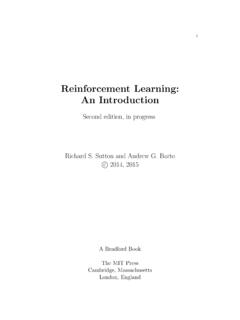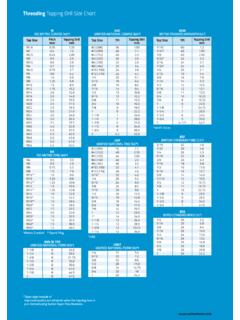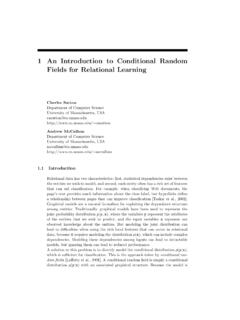Transcription of 29. How to find the total distance traveled by a particle ...
1 29. How to find the total distance traveled by a particle moving on the x-axis. x(t) = position function x (t) = v(t) = velocity function *|v(t)| = speed function x (t) = v (t) = a(t) = acceleration function The definite integral of velocity on [a, b] gives the displacement of a particle on [a, b]. To find the position of a particle given its initial position and the velocity function, add the initial position to the displacement (integral of velocity). To find the total distance traveled on [a, b] by a particle given the velocity o **WITH A CALCULATOR** integrate |v(t)| on [a, b] o **WITHOUT A CALCULATOR** Split up the velocity function into the positive and negative intervals: Set v(t) = 0, and split the integral at these points Take the absolute value of each integral The sum of these absolute values is the total distance traveled Example: The velocity of a particle is given by v(t) = 2t2 2.
2 Find the total distance traveled when 0<t<2. V(t) = 2t2 2 = 0 t2 = 1 t = +-1 30. How to use the integral to find net change (accumulation) given the rate of change as a graph or as an equation. When given a rate of change and asked to find the amount of something accumulated over time, integrate the rate. Make sure to add any given initial condition. Example: The rate at which water enters a tank is given by in gallons per hour for . At time t = 0, there were 5000 gallons of water in the tank.
3 How many gallons were there in the tank at t = 7? # of gallons = If given a graph of the rate, the integral would be the area under the curve. 31. How to solve an exponential growth/decay problem Example: Bacteria growth is modeled by the differential equation, . A bacteria culture starts with 500 bacteria and after 12 hours, there are 6000 bacteria. Find an expression for the number of bacteria after t hours, and find the number of bacteria after 2 days. Solve for k: At t = 48, 32. How to interpret differential equations geometrically using slope fields and their relationships to derivatives of implicitly defined functions.
4 33. How to solve a separable differential equation with given boundaries. **See AP 2008 #5 scoring guidelines 34. How to compute the area between two curves. Find the points of intersection between the two curves by setting them equal to each other. Determine which curve is the top (right) and which is the bottom (left). Evaluate the integral of the top curve minus the bottom curve (or right curve minus left curve if using y s) Example: Find the area of the region bounded by and . Points of intersection: 35.
5 How to compute the volume of a solid of revolution: a. About the x-axis using the cylindrical shell method: . where r is the function ( distance from the curve to the axis). Example: Find the volume of a solid generated by revolving y = sinx around the x=axis from x = 0 to x = . b. About the y-axis Example: Find the volume of a solid generated by revolving the region enclosed by the y-axis, y = 2, and x = y2 around the y-axis. 36. How to compute the volume of a solid of revolution: a. About the x-axis with a hole using the washer method When there is a hole in a solid of revolution, the cross section will look like a washer.
6 Take the integral of the outer circle minus the inner circle. Example: Find the volume of the solid generated by revolving the region bounded by the graph of and about the x-axis. Points of intersection: x = 0, 2 b. About some line y = a for some a. Example: Find the volume of the solid generated by revolving the region from above about the line y = 6. The outer radius will now go from 6 to x2, and the inner radius will go from 6 to 4x x2. 37.
7 How to find the volume with a given cross-section. *Remember, Volume is always equal to the integral of the function of areas of cross sections. Example: The region bound by the curves and is the base of a solid. For each y, where , the cross section of the solid taken perpendicular to the y-axis is a rectangle whose height is 3 times the length of its base in the region. Write, but do not evaluate, an integral expression that gives the volume of the solid. Function in terms of y.







